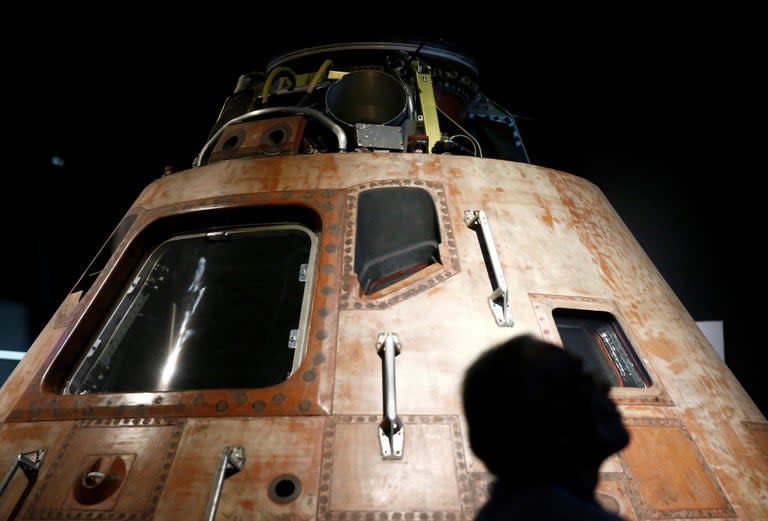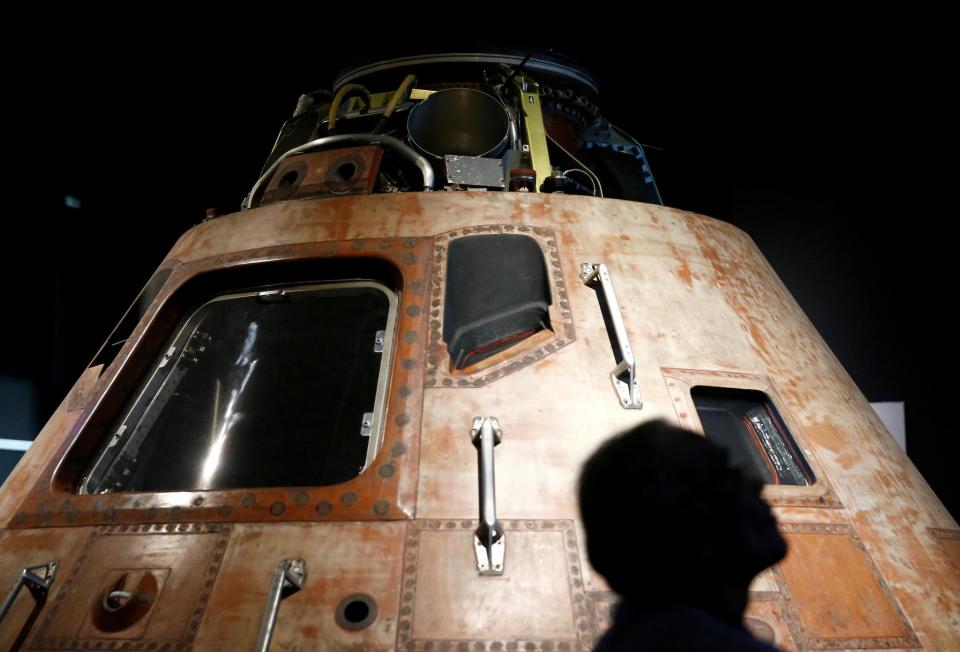Apollo 11: The things that happened in the hours as astronauts headed for Moon landing
On this day 50 years ago, the Apollo astronauts who were being hailed as heroes didn't have all that much to do. They were a central part of a mission watched around the world, one which would define the century that followed, and which required intensive intelligence and ingenuity beyond our imagining – but at the moment they were engaged in housekeeping and sleeping.
Now is the anniversary of perhaps the most unusual part of the Moon mission: that intermediate period after astronauts had completed the all-important liftoff, and as they waited, quietly drifting through space, on their way to the Moon.
The launch happened on 16 July, 1969. The landing happened four days later, on 20 July.
Between those days were a strange and eerie silence, filled with activities that would be humdrum were they not happening inside of the most ambitious activity ever launched by humankind.
As the three astronauts – Neil Armstrong, Buzz Aldrin and Michael Collins – floated serenely through space, they began to think about what would happen at Earth. They were travelling at immense speed which meant that they had left the Earth quicker than many of those who had come along to watch would be able to get out of the parking lots they'd viewed it from.
"As we proceed outbound, this number will get smaller and smaller until the tug of the Moon's gravity exceeds that of the Earth's and then we will start speeding up again," Collins later said. "It's hard to believe that we are on our way to the Moon, at 1200 miles altitude now, less than three hours after liftoff, and I'll bet the launch-day crowd down at the Cape is still bumper to bumper, straggling back to the motels and bars."
Soon after that, they would get to the main work they had to do during the journey, which began early. Collins was assisted by his two colleagues to separate the command module from the third stage of the Saturn rocket, and then spin it around and connect with the lunar module known as Eagle that would be used to descend to the service.
"This of course was a critical maneuver in the flight plan," Aldrin later said. "If the separation and docking did not work, we would return to Earth.
"There was also the possibility of an in-space collision and the subsequent decompression of our cabin, so we were still in our spacesuits as Mike separated us from the Saturn third stage. Critical as the maneuver is, I felt no apprehension about it, and if there was the slightest inkling of concern it disappeared quickly as the entire separation and docking proceeded perfectly to completion.
"The nose of Columbia was now connected to the top of the Eagle and heading for the Moon as we watched the Saturn third stage venting, a propulsive maneuver causing it to move slowly away from us."
After that was completed, the really stressful work was over. The astronauts could get to sitting out the journey, waiting until they reached their distant target.
By the next day, the astronauts were able to darken the windows with covers that served as curtains, and try and get some sleep as the command module slowly rotated them through space. They'd spend the following days doing chores and talking with Earth.
During those intermediate days, there was considerably less activity on board the craft. Nasa's official timeline – which gives detailed information on absolutely everything the crew did – lists only a few activities over the course of the 17th and 18th, as the three astronauts floated through space.
On 17 July, for instance, the crew simply conducted three TV transmissions and did one small burn of their engines to correct their course. The day after, there was another TV transmission and a quick journey into the lunar module and back so that it could be inspected ahead of the landing.
But the day later, as they approached the Moon and, the atmosphere would change.
"Day four has a decidedly different feel to it," Collins later said. "Instead of nine hours' sleep, I get seven – and fitful ones at that.
"Despite our concentrated effort to conserve our energy on the way to the Moon, the pressure is overtaking us (or me at least), and I feel that all of us are aware that the honeymoon is over and we are about to lay our little pink bodies on the line."
At this point, everything became much more real: for one, the astronauts could once again see the Moon properly for the first time in nearly a day. They were now in orbit around the Moon, and it was vividly clear.
"The Moon I have known all my life, that two-dimensional small yellow disk in the sky, has gone away somewhere, to be replaced by the most awesome sphere I have ever seen," said Collins later.
"To begin with it is huge, completely filling our window. Second, it is three-dimensional. The belly of it bulges out toward us in such a pronounced fashion that I almost feel I can reach out and touch it. To add to the dramatic effect, we can see the stars again. We are in the shadow of the Moon now, and the elusive stars have reappeared."
At this point, the work to get ready to touch the lunar surface begins. The astronauts each carry out the checks that would try and ensure that the descent was as safe as possible, and that the lander that would carry them down was as secure as it could possibly be.
Collins would spent yet more time on his own, waiting, as Aldrin and Armstrong jumped around the lunar surface. As they did, he waited, floating above the Moon – occasionally disappearing behind it and being plunged into the all-consuming quiet of the far side of the Moon – and waiting for his two colleagues to make their return, before heading back to Earth.

 Yahoo Finance
Yahoo Finance 

